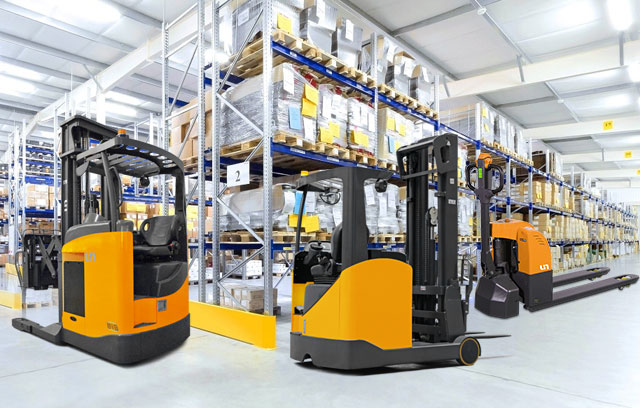In modern logistics, warehousing and manufacturing, forklifts are indispensable material handling equipment. They are of various types and have their own characteristics. As the two mainstream types, internal combustion forklifts and battery forklifts each have unique advantages and application scenarios. The following will explore the differences between internal combustion forklifts and battery forklifts in terms of power source, performance characteristics, environmental protection and maintenance costs.
The power of internal combustion forklifts comes from internal combustion engines, usually using fossil fuels such as gasoline, diesel, liquefied petroleum gas (LPG) or natural gas as energy. This power mode gives internal combustion forklifts strong power output and long continuous operation capabilities, especially suitable for use in outdoor or large warehouses and other environments that require high loads and long working hours. Battery forklifts are completely powered by battery packs, usually using lead-acid batteries or more advanced lithium batteries. Battery forklifts are favored today with their zero emissions and low noise characteristics as environmental awareness increases. They are more suitable for indoor environments such as warehouses, supermarkets, hospitals and other places with high air quality requirements.
Internal combustion forklifts are known for their high load-bearing capacity and good climbing ability. They can operate stably under harsh working conditions and are the first choice for heavy material handling. However, their fuel consumption and maintenance costs are relatively high, and their emissions may have a certain impact on the environment. Battery forklifts are known for their flexibility, ease of operation and environmental friendliness. They start quickly, operate quietly, do not require complex maintenance procedures, and do not produce harmful gases during use. However, the battery forklift's endurance is limited by the battery capacity, and it needs to be charged regularly. In the case of high loads or long continuous operation time, it may be necessary to frequently replace the battery or wait for charging.
In terms of maintenance costs, battery forklifts and internal combustion forklifts also have their own advantages. The initial investment of a battery forklift may be high, but because of its simple structure, easy maintenance, and no need to frequently replace fuel filters, engine oil and other components, the maintenance cost is relatively low in the long run. Although the initial investment of an internal combustion forklift is relatively low, the maintenance cost is often high due to its complex mechanical structure and fuel consumption.











 中文简体
中文简体 عربى
عربى Español
Español














